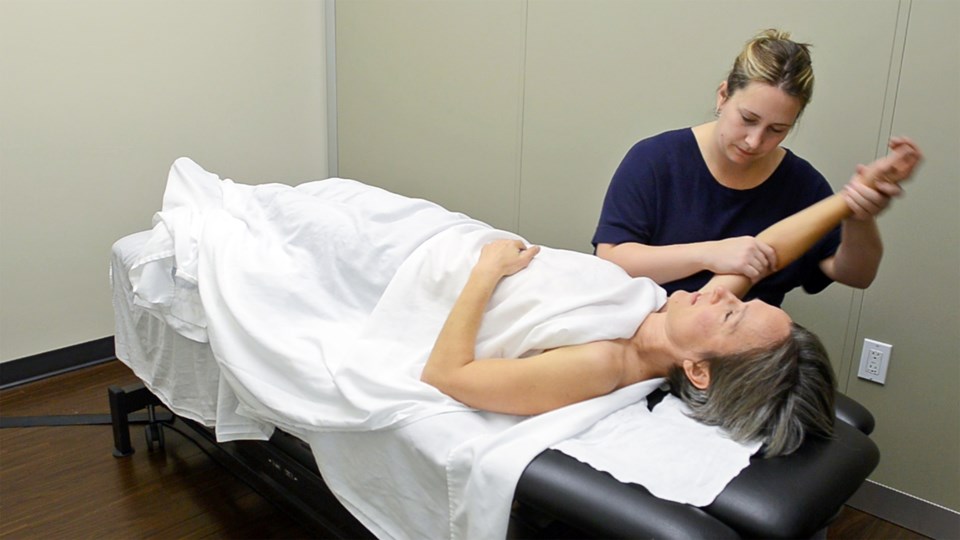For 14 weeks, NOW health reporter Cornelia Naylor has been assigned to undertake a “Fortius challenge,” setting fitness and performance goals and experiencing first-hand the many ways Burnaby’s Fortius Sport & Health can help.
As a rehab project, the team will zero in on a lingering shoulder injury, but Naylor will also get a chance to sample everything else Fortius has to offer, from massage therapy to diet advice and from vision testing to a scientific analysis of her running gait.
Here’s her third report:
No rehab story would be complete without at least one fall off the wagon, so I decided not to lie to Fortius physiotherapist Mike Foster about not doing the shoulder exercises he assigned during our first visit.
It’s just as well, since lying would apparently have been futile anyway.
“I can tell when people aren’t doing them,” Foster says.
“How can you tell?”
“How’s your shoulder feeling?”
“About the same.”
“That’s how I can tell.”
Touché.
He’s having none of my busy-week excuses either.
“Time-wise it’s tough,” he says. “Nobody has ever come in and said to me, ‘Hey, Mike, I have an hour a day that I don’t do anything. Give me a bunch of exercises to do.’ You have to find a way to work it into the routine.”
So there it is: You can lead a middle-aged recreational athlete to water, but you can’t make her drink.
Fortius has the state-of-the-art equipment and therapeutic know-how to help fix much more complex injuries than mine, but without buy-in from clients, there’s only so much they can do.
After running through my neglected exercises with Foster, I slink out of physio chastened and ready to do better.
Massage with therapist Erin Reid is next.
This isn’t your spa massage with dimmed lights and aromatherapy candles.
The setting is decidedly clinical, and after asking how things are feeling, Reid – who has already consulted with Foster about my case – zeroes right in on my achy shoulder.
After applying some massage lotion (she’s found gel works better for the hairier male clients), Reid tells me the goal of the rubbing and poking is to increase range of motion and pliability by breaking up scarred-down muscle tissue.
It’s an anatomy lesson too.
When she hits one spot on my shoulder joint, I feel it at the base of my skull.
Reid explains that it’s my trapezius, which attaches above the shoulder and fans out in a sideways triangle from my skull to midway down my spine.
Its job is to move my shoulder blade and support my arm.
Reid suspects it might be sore because of my too-loose shoulder joint.
“It’s working harder to keep things in control,” she says.
By the end of the appointment, Reid wants to feel my shoulder joint gliding instead of “hinging.”
She checks for improved muscle flexibility with some gentle pinching.
“You’re looking for pliability,” she says. “Can I pick it up? Is it too much?”
After handling my shoulder from every possible angle for about 40 minutes, she’s satisfied with the result.
“Things are actually moving in there now.”
Next stop, walk/run gait analysis.
Follow Cornelia Naylor on Twitter, @CorNaylor.



